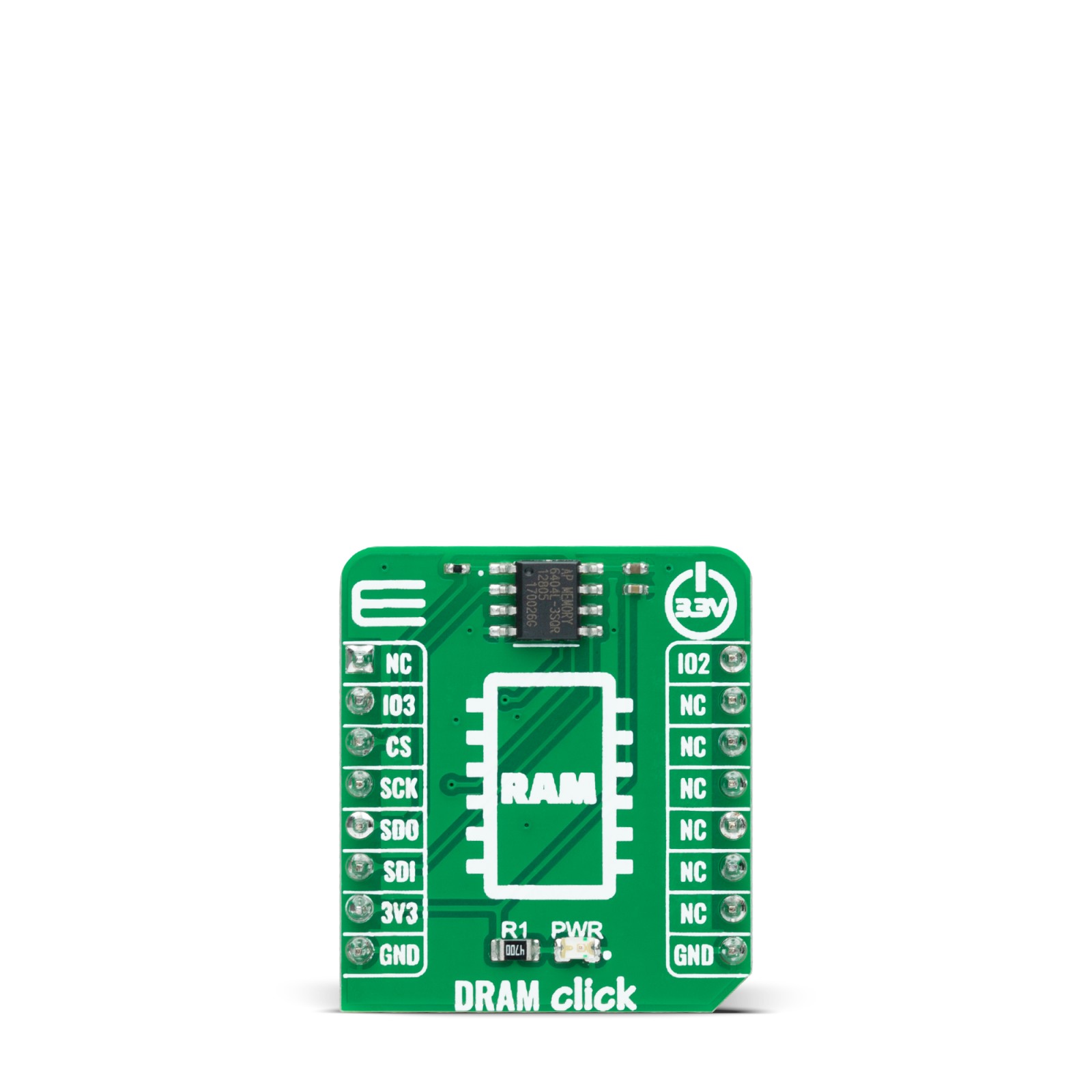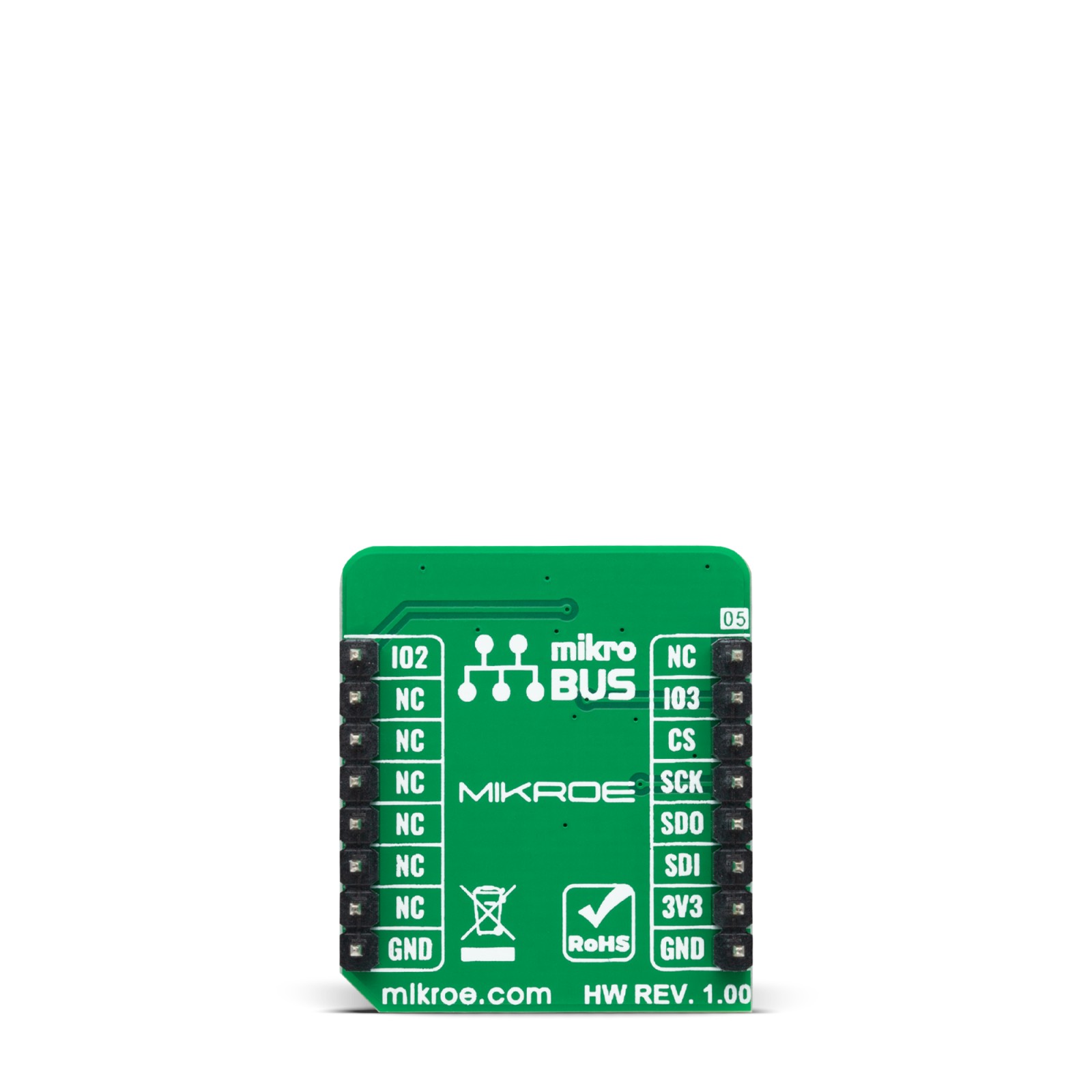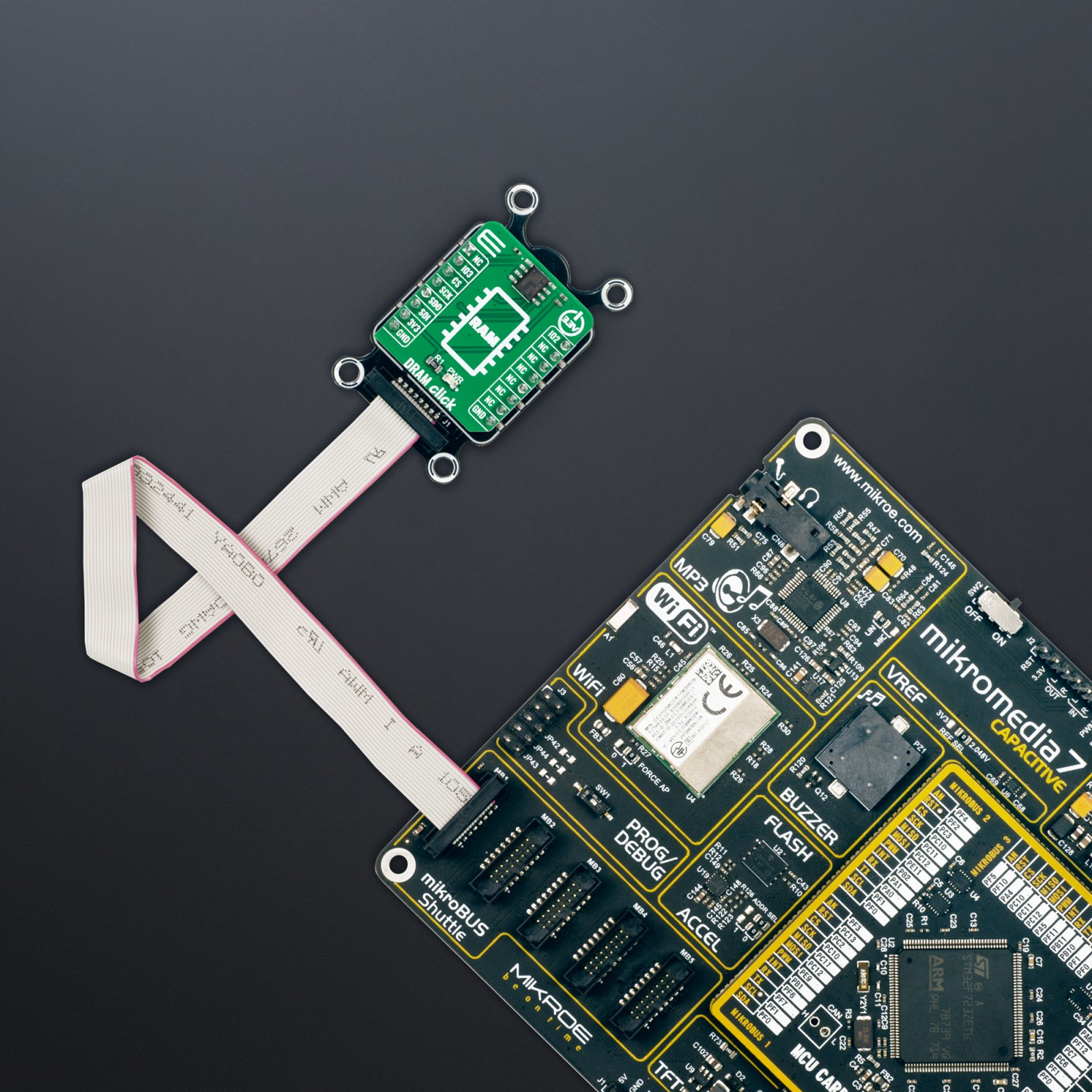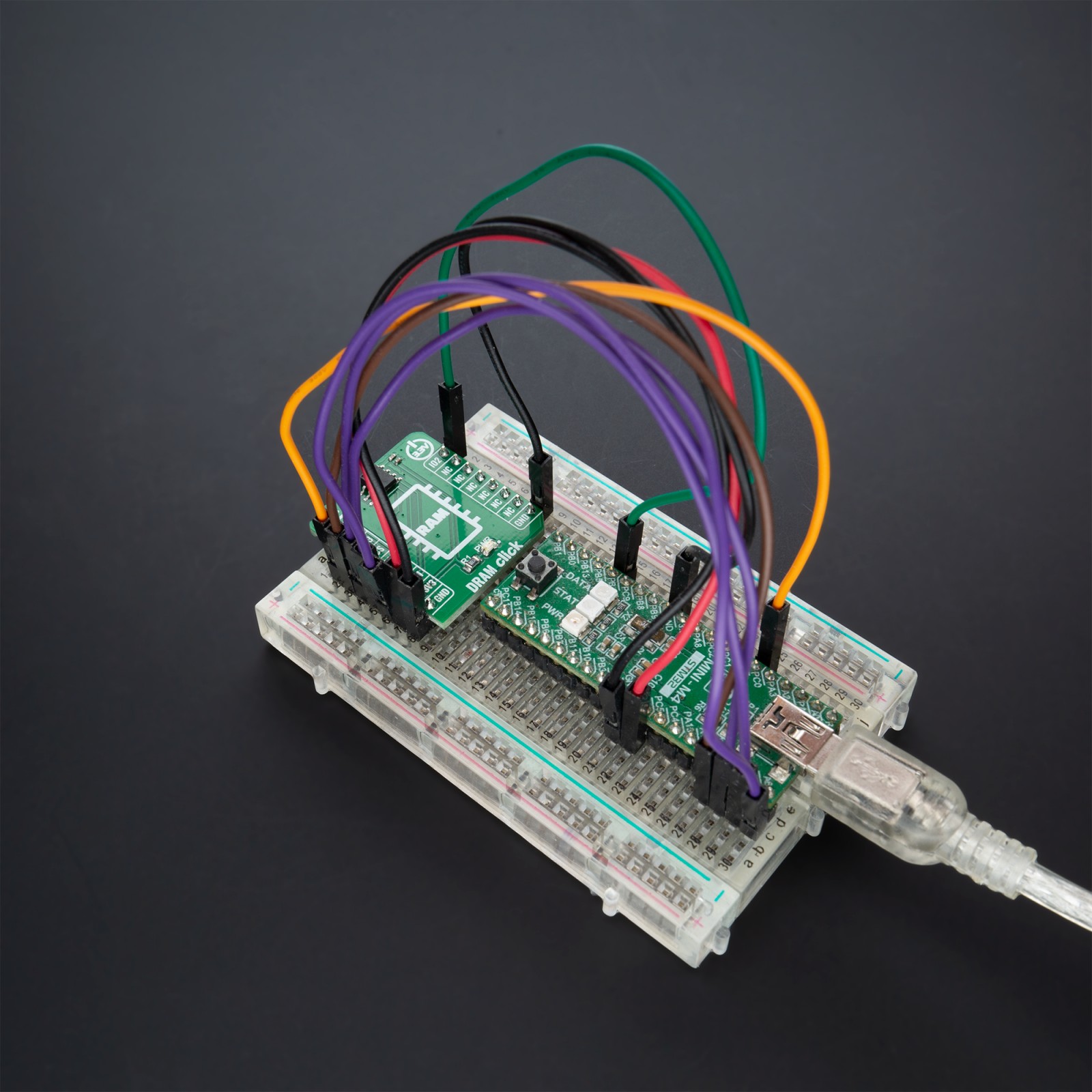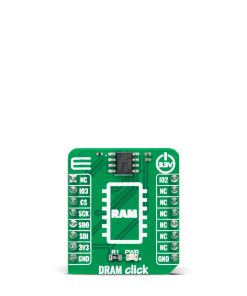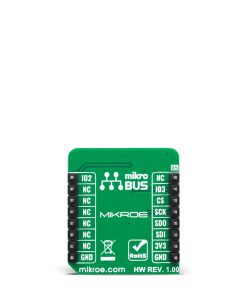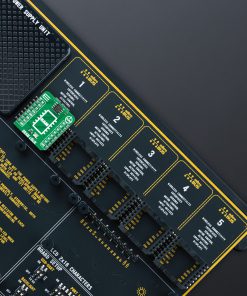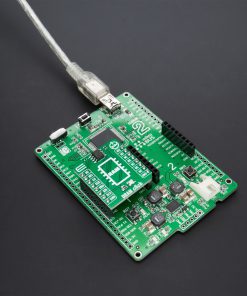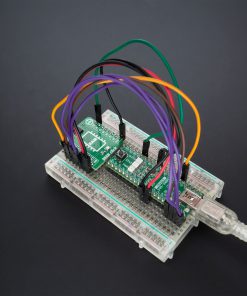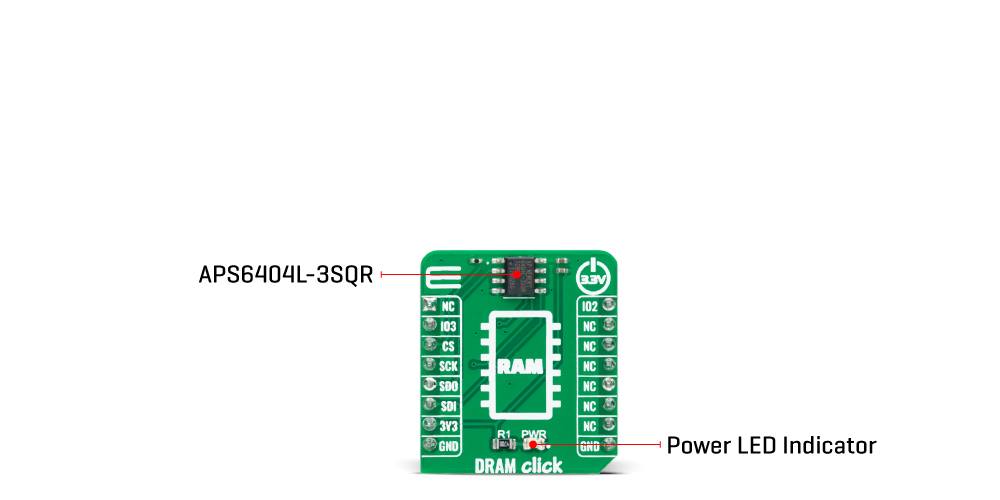DRAM Click
R200.00 ex. VAT
DRAM Click is a compact add-on board representing a dynamic random-access memory solution. This board contains the APS6404L-3SKR from AP Memory, a high-performance 64Mb SPI/KPI PSRAM memory organized as 8M x 8 bits each. This Pseudo-SRAM device features a high speed, low pin count interface and incorporates a seamless self-managed refresh mechanism to maximize the performance of memory read operation. It has 4 SDR I/O pins and operates in SPI or QPI (quad peripheral interface) mode with frequencies up to 133 MHz. This Click board™ is most suitable for low-power and low-cost portable applications.
DRAM Click is supported by a mikroSDK compliant library, which includes functions that simplify software development. This Click board™ comes as a fully tested product, ready to be used on a system equipped with the mikroBUS™ socket.
Stock: Lead-time applicable.
| 5+ | R190.00 |
| 10+ | R180.00 |
| 15+ | R170.00 |
| 20+ | R163.60 |

